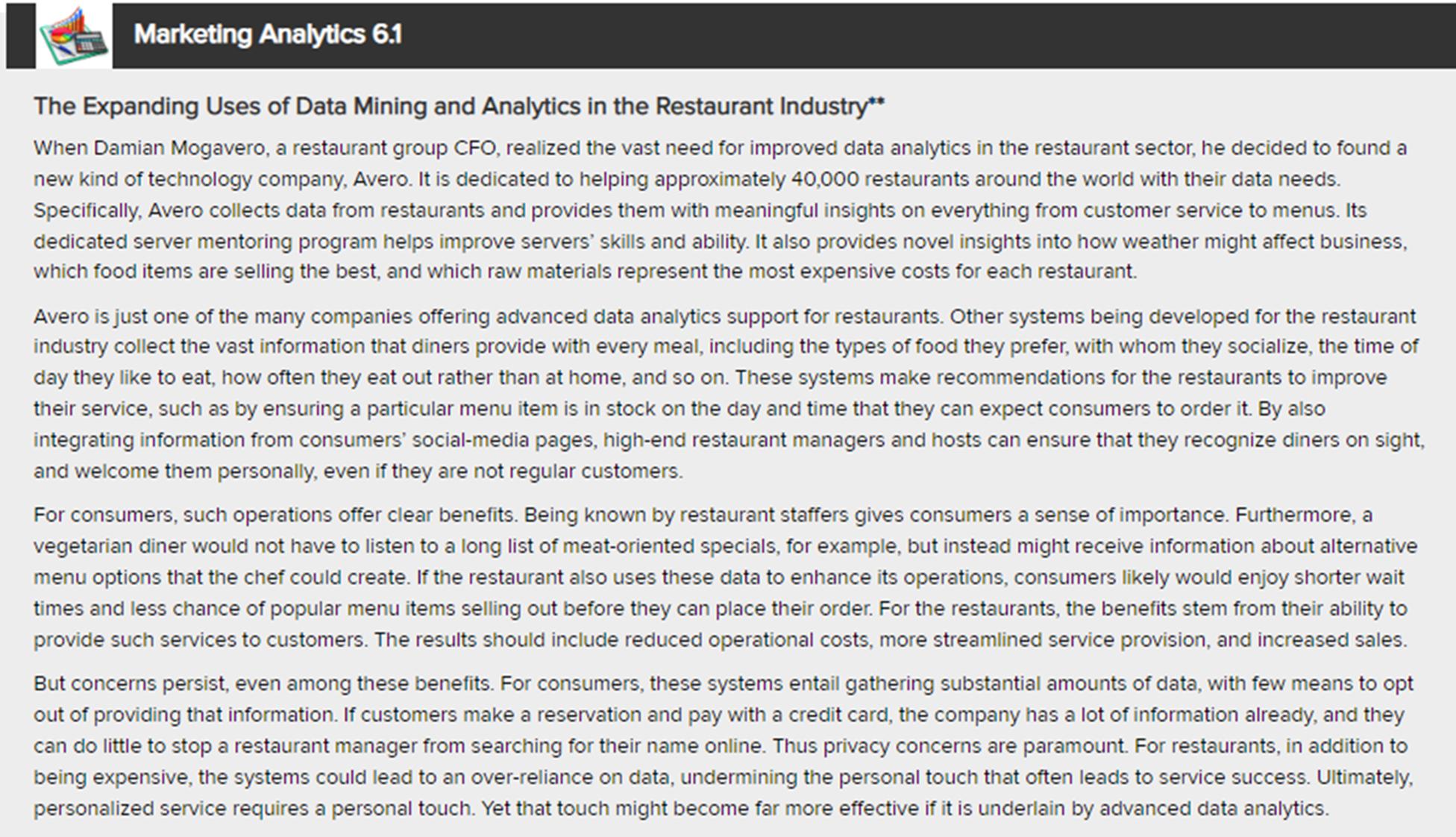Answered step by step
Verified Expert Solution
Question
1 Approved Answer
Marketing Analytics 6.1 The Expanding Uses of Data Mining and Analytics in the Restaurant Industry** When Damian Mogavero, a restaurant group CFO, realized the

Marketing Analytics 6.1 The Expanding Uses of Data Mining and Analytics in the Restaurant Industry** When Damian Mogavero, a restaurant group CFO, realized the vast need for improved data analytics in the restaurant sector, he decided to found a new kind of technology company, Avero. It is dedicated to helping approximately 40,000 restaurants around the world with their data needs. Specifically, Avero collects data from restaurants and provides them with meaningful insights on everything from customer service to menus. Its dedicated server mentoring program helps improve servers' skills and ability. It also provides novel insights into how weather might affect business, which food items are selling the best, and which raw materials represent the most expensive costs for each restaurant. Avero is just one of the many companies offering advanced data analytics support for restaurants. Other systems being developed for the restaurant industry collect the vast information that diners provide with every meal, including the types of food they prefer, with whom they socialize, the time of day they like to eat, how often they eat out rather than at home, and so on. These systems make recommendations for the restaurants to improve their service, such as by ensuring a particular menu item is in stock on the day and time that they can expect consumers to order it. By also integrating information from consumers' social-media pages, high-end restaurant managers and hosts can ensure that they recognize diners on sight, and welcome them personally, even if they are not regular customers. For consumers, such operations offer clear benefits. Being known by restaurant staffers gives consumers a sense of importance. Furthermore, a vegetarian diner would not have to listen to a long list of meat-oriented specials, for example, but instead might receive information about alternative menu options that the chef could create. If the restaurant also uses these data to enhance its operations, consumers likely would enjoy shorter wait times and less chance of popular menu items selling out before they can place their order. For the restaurants, the benefits stem from their ability to provide such services to customers. The results should include reduced operational costs, more streamlined service provision, and increased sales. But concerns persist, even among these benefits. For consumers, these systems entail gathering substantial amounts of data, with few means to opt out of providing that information. If customers make a reservation and pay with a credit card, the company has a lot of information already, and they can do little to stop a restaurant manager from searching for their name online. Thus privacy concerns are paramount. For restaurants, in addition to being expensive, the systems could lead to an over-reliance on data, undermining the personal touch that often leads to service success. Ultimately, personalized service requires a personal touch. Yet that touch might become far more effective if it is underlain by advanced data analytics.
Step by Step Solution
There are 3 Steps involved in it
Step: 1
The integration of data mining and analytics in the restaurant industry as exemplified by companies like Avero has expanded significantly in recent ye...
Get Instant Access to Expert-Tailored Solutions
See step-by-step solutions with expert insights and AI powered tools for academic success
Step: 2

Step: 3

Ace Your Homework with AI
Get the answers you need in no time with our AI-driven, step-by-step assistance
Get Started


